A Comprehensive Guide to LTC660CN8#PBF DC/DC Switching Regulator
Linear Technology/Analog Devices
8 Terminals 1.5V 2.5V 8-Pin LTC660 DC DC Voltage Regulator SWITCHED CAPACITOR CONVERTER 1 Outputs 10kHz 80kHz Tube 8-DIP (0.300, 7.62mm)
Unit Price: $15.375972
Ext Price: $15.38









8 Terminals 1.5V 2.5V 8-Pin LTC660 DC DC Voltage Regulator SWITCHED CAPACITOR CONVERTER 1 Outputs 10kHz 80kHz Tube 8-DIP (0.300, 7.62mm)
This article provides an in-depth analysis of the LTC660CN8#PBF DC/DC switching regulator, manufactured by Linear Technology/Analog Devices. It covers the product description, features, applications, reference designs, alternative parts, and frequently asked questions (FAQs) related to this component.
Product Introduction
1. Description:
The LTC660CN8#PBF is a ratiometric DC/DC switching regulator with an output voltage of 11V. It operates with a fixed output type and can accept input voltages ranging from 1.5V to 5.5V. The device features a charge pump topology with a switching frequency between 10kHz to 80kHz. With a current output of 100mA and low operating supply current of 230μA, the LTC660CN8#PBF is suitable for various power management applications.
2. Features:
- Fixed output voltage of 11V
- Input voltage range from 1.5V to 5.5V
- Low operating supply current of 230μA
- Charge pump topology with switching frequency of 10kHz to 80kHz
- Output current of 100mA
- Positive or negative output configuration
- Lead-free and RoHS compliant
3. Applications:
Primary Applications:
- Battery-powered devices
- Portable electronics
- Sensor modules
- Power supply modules
Secondary Applications:
- Automotive electronics
- Industrial control systems
- Medical devices
Specific Modules:
- Power management modules
- Voltage regulation modules
- Charge pump circuits
4. Reference Designs:
Some reference designs that utilize the LTC660CN8#PBF DC/DC switching regulator include:
- Portable medical device power supply
- Battery-powered sensor node
- Industrial control system power management
5. Alternative Parts:
Alternative parts to the LTC660CN8#PBF DC/DC switching regulator include:
- LTC660CS8#PBF
- LTC660IS8#PBF
- LTC660CN8#TRPBF
6. FAQs:
Q: What is the maximum supply voltage supported by the LTC660CN8#PBF?
A: The LTC660CN8#PBF can handle a maximum supply voltage of 5.5V.
Q: What is the operating temperature range of the LTC660CN8#PBF?
A: The LTC660CN8#PBF has an operating temperature range of 0°C to 70°C.
Q: Is the LTC660CN8#PBF suitable for automotive applications?
A: Yes, the LTC660CN8#PBF can be used in automotive electronics given its specifications and performance.
In conclusion, the LTC660CN8#PBF DC/DC switching regulator offers a reliable and efficient solution for various power management applications. Its compact size, low power consumption, and versatile output configurations make it a popular choice among electronic engineers designing portable and battery-powered devices.
Specifications
- TypeParameter
- Lifecycle Status
Lifecycle Status refers to the current stage of an electronic component in its product life cycle, indicating whether it is active, obsolete, or transitioning between these states. An active status means the component is in production and available for purchase. An obsolete status indicates that the component is no longer being manufactured or supported, and manufacturers typically provide a limited time frame for support. Understanding the lifecycle status is crucial for design engineers to ensure continuity and reliability in their projects.
PRODUCTION (Last Updated: 3 weeks ago) - Factory Lead Time8 Weeks
- Mounting Type
The "Mounting Type" in electronic components refers to the method used to attach or connect a component to a circuit board or other substrate, such as through-hole, surface-mount, or panel mount.
Through Hole - Package / Case
refers to the protective housing that encases an electronic component, providing mechanical support, electrical connections, and thermal management.
8-DIP (0.300, 7.62mm) - Surface Mount
having leads that are designed to be soldered on the side of a circuit board that the body of the component is mounted on.
NO - Number of Pins8
- Operating Temperature
The operating temperature is the range of ambient temperature within which a power supply, or any other electrical equipment, operate in. This ranges from a minimum operating temperature, to a peak or maximum operating temperature, outside which, the power supply may fail.
0°C~70°C TA - Packaging
Semiconductor package is a carrier / shell used to contain and cover one or more semiconductor components or integrated circuits. The material of the shell can be metal, plastic, glass or ceramic.
Tube - Published1998
- JESD-609 Code
The "JESD-609 Code" in electronic components refers to a standardized marking code that indicates the lead-free solder composition and finish of electronic components for compliance with environmental regulations.
e3 - Part Status
Parts can have many statuses as they progress through the configuration, analysis, review, and approval stages.
Active - Moisture Sensitivity Level (MSL)
Moisture Sensitivity Level (MSL) is a standardized rating that indicates the susceptibility of electronic components, particularly semiconductors, to moisture-induced damage during storage and the soldering process, defining the allowable exposure time to ambient conditions before they require special handling or baking to prevent failures
1 (Unlimited) - Number of Terminations8
- ECCN Code
An ECCN (Export Control Classification Number) is an alphanumeric code used by the U.S. Bureau of Industry and Security to identify and categorize electronic components and other dual-use items that may require an export license based on their technical characteristics and potential for military use.
EAR99 - Terminal Finish
Terminal Finish refers to the surface treatment applied to the terminals or leads of electronic components to enhance their performance and longevity. It can improve solderability, corrosion resistance, and overall reliability of the connection in electronic assemblies. Common finishes include nickel, gold, and tin, each possessing distinct properties suitable for various applications. The choice of terminal finish can significantly impact the durability and effectiveness of electronic devices.
Matte Tin (Sn) - Terminal Position
In electronic components, the term "Terminal Position" refers to the physical location of the connection points on the component where external electrical connections can be made. These connection points, known as terminals, are typically used to attach wires, leads, or other components to the main body of the electronic component. The terminal position is important for ensuring proper connectivity and functionality of the component within a circuit. It is often specified in technical datasheets or component specifications to help designers and engineers understand how to properly integrate the component into their circuit designs.
DUAL - Terminal Pitch
The center distance from one pole to the next.
2.54mm - Base Part Number
The "Base Part Number" (BPN) in electronic components serves a similar purpose to the "Base Product Number." It refers to the primary identifier for a component that captures the essential characteristics shared by a group of similar components. The BPN provides a fundamental way to reference a family or series of components without specifying all the variations and specific details.
LTC660 - Function
The parameter "Function" in electronic components refers to the specific role or purpose that the component serves within an electronic circuit. It defines how the component interacts with other elements, influences the flow of electrical signals, and contributes to the overall behavior of the system. Functions can include amplification, signal processing, switching, filtering, and energy storage, among others. Understanding the function of each component is essential for designing effective and efficient electronic systems.
Ratiometric - Number of Outputs1
- Output Voltage
Output voltage is a crucial parameter in electronic components that refers to the voltage level produced by the component as a result of its operation. It represents the electrical potential difference between the output terminal of the component and a reference point, typically ground. The output voltage is a key factor in determining the performance and functionality of the component, as it dictates the level of voltage that will be delivered to the connected circuit or load. It is often specified in datasheets and technical specifications to ensure compatibility and proper functioning within a given system.
11V - Output Type
The "Output Type" parameter in electronic components refers to the type of signal or data that is produced by the component as an output. This parameter specifies the nature of the output signal, such as analog or digital, and can also include details about the voltage levels, current levels, frequency, and other characteristics of the output signal. Understanding the output type of a component is crucial for ensuring compatibility with other components in a circuit or system, as well as for determining how the output signal can be utilized or processed further. In summary, the output type parameter provides essential information about the nature of the signal that is generated by the electronic component as its output.
Fixed - Voltage - Input (Min)
Voltage - Input (Min) refers to the minimum voltage level that an electronic component requires to operate correctly. It indicates the lowest voltage that can be applied to the component while still allowing it to function as intended. If the input voltage falls below this specified minimum, the component may not perform properly or may fail to operate altogether. This parameter is critical for ensuring reliable operation and longevity of the device in electronic circuits.
1.5V 2.5V - Input Voltage-Nom
Input Voltage-Nom refers to the nominal or rated input voltage that an electronic component or device is designed to operate within. This parameter specifies the voltage level at which the component is expected to function optimally and safely. It is important to ensure that the actual input voltage supplied to the component does not exceed this nominal value to prevent damage or malfunction. Manufacturers provide this specification to guide users in selecting the appropriate power supply or input voltage source for the component. It is a critical parameter to consider when designing or using electronic circuits to ensure reliable performance and longevity of the component.
5V - Max Supply Voltage
In general, the absolute maximum common-mode voltage is VEE-0.3V and VCC+0.3V, but for products without a protection element at the VCC side, voltages up to the absolute maximum rated supply voltage (i.e. VEE+36V) can be supplied, regardless of supply voltage.
5.5V - Min Supply Voltage
The minimum supply voltage (V min ) is explored for sequential logic circuits by statistically simulating the impact of within-die process variations and gate-dielectric soft breakdown on data retention and hold time.
1.5V - Analog IC - Other Type
Analog IC - Other Type is a parameter used to categorize electronic components that are integrated circuits (ICs) designed for analog signal processing but do not fall into more specific subcategories such as amplifiers, comparators, or voltage regulators. These ICs may include specialized analog functions such as analog-to-digital converters (ADCs), digital-to-analog converters (DACs), voltage references, or signal conditioning circuits. They are typically used in various applications where precise analog signal processing is required, such as in audio equipment, instrumentation, communication systems, and industrial control systems. Manufacturers provide detailed specifications for these components to help engineers select the most suitable IC for their specific design requirements.
SWITCHED CAPACITOR CONVERTER - Operating Supply Current
Operating Supply Current, also known as supply current or quiescent current, is a crucial parameter in electronic components that indicates the amount of current required for the device to operate under normal conditions. It represents the current drawn by the component from the power supply while it is functioning. This parameter is important for determining the power consumption of the component and is typically specified in datasheets to help designers calculate the overall power requirements of their circuits. Understanding the operating supply current is essential for ensuring proper functionality and efficiency of electronic systems.
230μA - Output Configuration
Output Configuration in electronic components refers to the arrangement or setup of the output pins or terminals of a device. It defines how the output signals are structured and how they interact with external circuits or devices. The output configuration can determine the functionality and compatibility of the component in a circuit design. Common types of output configurations include single-ended, differential, open-drain, and push-pull configurations, each serving different purposes and applications in electronic systems. Understanding the output configuration of a component is crucial for proper integration and operation within a circuit.
Positive or Negative - Voltage - Output (Min/Fixed)
Voltage - Output (Min/Fixed) refers to the minimum fixed output voltage level that an electronic component, such as a voltage regulator or power supply, is designed to provide under specified load conditions. This parameter ensures that the device consistently delivers a reliable voltage that meets the requirements of the connected circuits or components. It is critical for applications where stable and predictable voltage is necessary for proper operation.
-Vin 2Vin Vin/2 - Topology
In the context of electronic components, "topology" refers to the arrangement or configuration of the components within a circuit or system. It defines how the components are connected to each other and how signals flow between them. The choice of topology can significantly impact the performance, efficiency, and functionality of the electronic system. Common topologies include series, parallel, star, mesh, and hybrid configurations, each with its own advantages and limitations. Designers carefully select the appropriate topology based on the specific requirements of the circuit to achieve the desired performance and functionality.
Charge Pump - Frequency - Switching
"Frequency - Switching" in electronic components refers to the rate at which a device, such as a transistor or switching regulator, turns on and off during operation. This parameter is crucial in determining the efficiency and performance of power converters, oscillators, and other circuits that rely on rapid switching. Higher switching frequencies typically allow for smaller component sizes but may require more advanced design considerations to manage heat and electromagnetic interference.
10kHz 80kHz - Supply Current-Max (Isup)
Supply Current-Max (Isup) refers to the maximum amount of current that an electronic component can draw from its power supply during operation. It represents the peak current demand of the device under normal operating conditions and is critical for ensuring that the power supply can adequately support the component's needs without risking damage or malfunction. This parameter is essential for designing circuits and selecting appropriate power supply units to prevent overloading and ensure reliable performance.
3mA - Synchronous Rectifier
Synchronous rectification is a technique for improving the efficiency of rectification by replacing diodes with actively controlled switches, usually power MOSFETs or power bipolar junction transistors (BJT).
No - Switcher Configuration
Switcher Configuration in electronic components refers to the arrangement or setup of a switcher circuit, which is a type of power supply that converts one form of electrical energy into another. The configuration of a switcher circuit includes the specific components used, such as transistors, diodes, capacitors, and inductors, as well as their interconnections and control mechanisms. The switcher configuration determines the efficiency, voltage regulation, and other performance characteristics of the power supply. Different switcher configurations, such as buck, boost, buck-boost, and flyback, are used for various applications depending on the desired output voltage and current requirements. Understanding and selecting the appropriate switcher configuration is crucial in designing reliable and efficient power supply systems for electronic devices.
DOUBLER INVERTER - Height Seated (Max)
Height Seated (Max) is a parameter in electronic components that refers to the maximum allowable height of the component when it is properly seated or installed on a circuit board or within an enclosure. This specification is crucial for ensuring proper fit and alignment within the overall system design. Exceeding the maximum seated height can lead to mechanical interference, electrical shorts, or other issues that may impact the performance and reliability of the electronic device. Manufacturers provide this information to help designers and engineers select components that will fit within the designated space and function correctly in the intended application.
3.937mm - Width7.62mm
- RoHS Status
RoHS means “Restriction of Certain Hazardous Substances” in the “Hazardous Substances Directive” in electrical and electronic equipment.
ROHS3 Compliant - Lead Free
Lead Free is a term used to describe electronic components that do not contain lead as part of their composition. Lead is a toxic material that can have harmful effects on human health and the environment, so the electronics industry has been moving towards lead-free components to reduce these risks. Lead-free components are typically made using alternative materials such as silver, copper, and tin. Manufacturers must comply with regulations such as the Restriction of Hazardous Substances (RoHS) directive to ensure that their products are lead-free and environmentally friendly.
Lead Free
Parts with Similar Specs
- ImagePart NumberManufacturerPackage / CaseNumber of PinsNumber of OutputsFrequency - SwitchingInput Voltage-NomVoltage - Input (Min)Output VoltageSynchronous RectifierView Compare
LTC660CN8#PBF
8-DIP (0.300, 7.62mm)
8
1
10kHz, 80kHz
5 V
1.5V, 2.5V
11 V
No
8-DIP (0.300, 7.62mm)
8
1
-
-
-
12 V
No
8-DIP (0.300, 7.62mm)
8
1
10kHz, 80kHz
5 V
-
11 V
No
8-DIP (0.300, 7.62mm)
8
1
-
2.5 V
0.7V
5 V
No
8-DIP (0.300, 7.62mm)
8
1
100Hz ~ 100kHz
5 V
3V
40 V
No
Datasheet PDF
- Datasheets :
- ConflictMineralStatement :
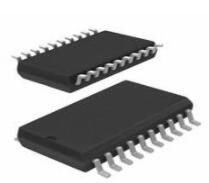 L297 Stepper Motor Driver Controller: Datasheet, L297 and L298
L297 Stepper Motor Driver Controller: Datasheet, L297 and L29823 November 20216964
![What you need to know about the use of the BS250 P-Channel MOSFET[FAQ]](https://res.utmel.com/Images/Article/a9cca941-e618-4ad6-ae31-15bcc55bff75.jpg) What you need to know about the use of the BS250 P-Channel MOSFET[FAQ]
What you need to know about the use of the BS250 P-Channel MOSFET[FAQ]31 March 20223839
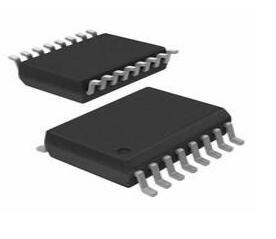 INA115BU Instrumentation Amplifier:Datasheet, Application, Circuit
INA115BU Instrumentation Amplifier:Datasheet, Application, Circuit17 September 20211405
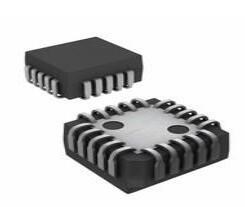 LM3914V Driver:Alternatives, Pinout, Datasheet
LM3914V Driver:Alternatives, Pinout, Datasheet05 August 20212492
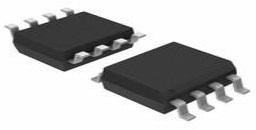 SST25VF020 2 Mbit SPI Serial Flash: Pinout, Equivalent and Datasheet
SST25VF020 2 Mbit SPI Serial Flash: Pinout, Equivalent and Datasheet24 March 2022696
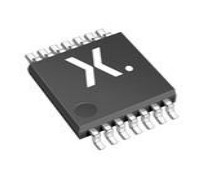 74HC10 Triple 3-input NAND Gate: Pinout, Equivalent and Datasheet
74HC10 Triple 3-input NAND Gate: Pinout, Equivalent and Datasheet17 November 20213871
![Arduino Micro microcontroller:Datasheet, Features, Applications[FAQs]](https://res.utmel.com/Images/Article/f79ca8c5-8312-4d43-902e-814e3493e6e2.png) Arduino Micro microcontroller:Datasheet, Features, Applications[FAQs]
Arduino Micro microcontroller:Datasheet, Features, Applications[FAQs]06 October 20232619
 STM32F407IGT6 Microcontroller: Features, Applications and Datasheet
STM32F407IGT6 Microcontroller: Features, Applications and Datasheet22 December 20231280
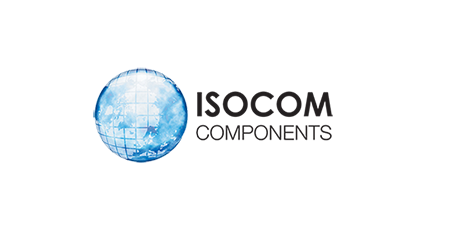 Good News: UTMEL Electronic is now the Authorized Distributor for Isocom Components 2004 Ltd.
Good News: UTMEL Electronic is now the Authorized Distributor for Isocom Components 2004 Ltd.10 November 20236461
 What are TPMS Sensors?
What are TPMS Sensors?21 November 20204317
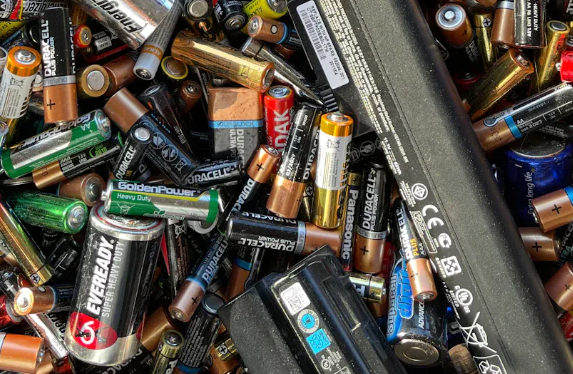 A76 Battery Equivalent Pros and Cons Explained
A76 Battery Equivalent Pros and Cons Explained29 August 2025827
 Trusted Vibration Sensors for Homeowners and Industry Professionals
Trusted Vibration Sensors for Homeowners and Industry Professionals17 July 2025445
 New Crisis in Semiconductors: Neon Gas Prices Soar 9 Times
New Crisis in Semiconductors: Neon Gas Prices Soar 9 Times21 March 20225043
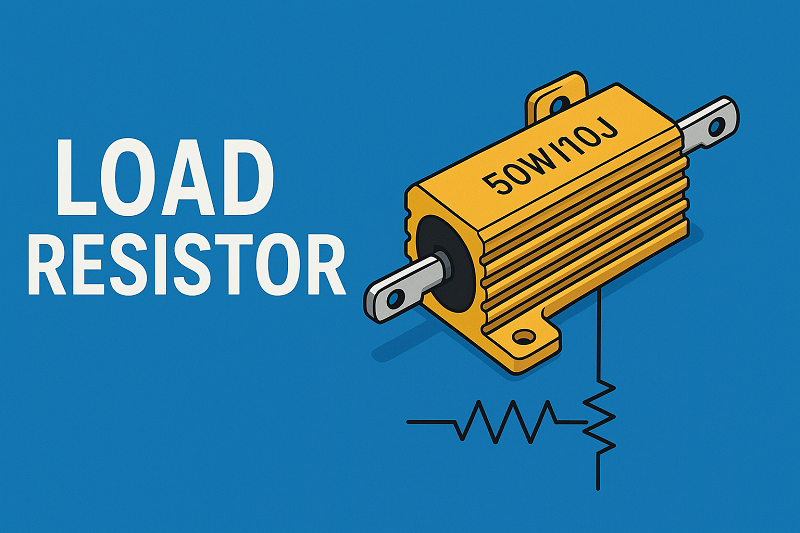 Load Resistor: Principles, Calculation and LED Applications
Load Resistor: Principles, Calculation and LED Applications23 July 20251645
 A Selection of the Most Representative Charts——Artificial Intelligence Index Report
A Selection of the Most Representative Charts——Artificial Intelligence Index Report18 March 2022676
 What is Solenoid Valve? How to Choose a Solenoid Valve?
What is Solenoid Valve? How to Choose a Solenoid Valve?06 January 20222958
Linear Technology/Analog Devices
In Stock: 850
Minimum: 1 Multiples: 1
Qty
Unit Price
Ext Price
1
$15.375972
$15.38
10
$14.505634
$145.06
100
$13.684560
$1,368.46
500
$12.909963
$6,454.98
1000
$12.179210
$12,179.21
Not the price you want? Send RFQ Now and we'll contact you ASAP.
Inquire for More Quantity












